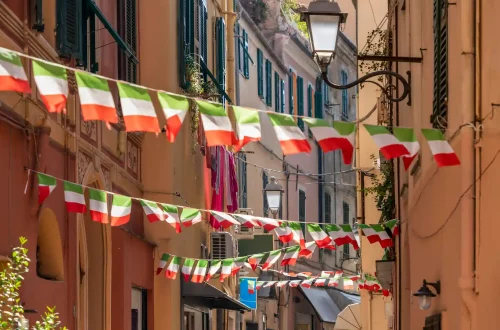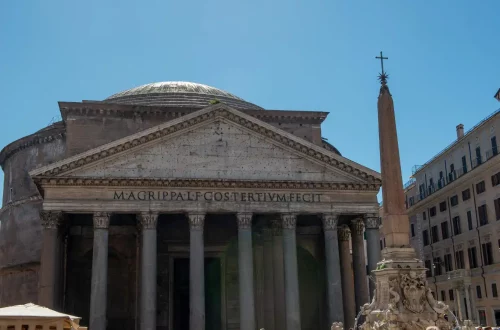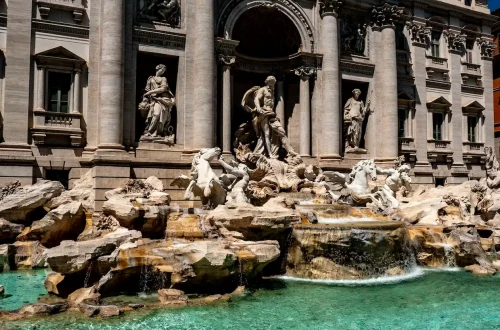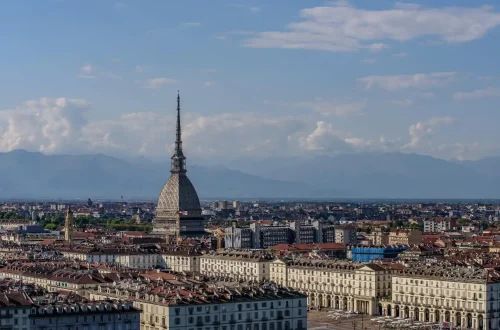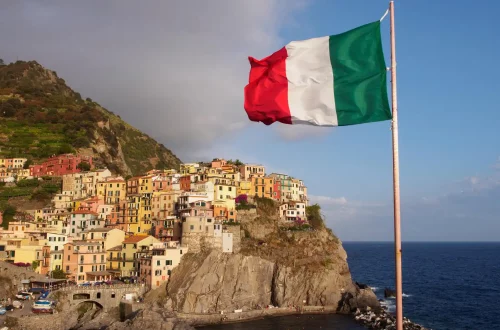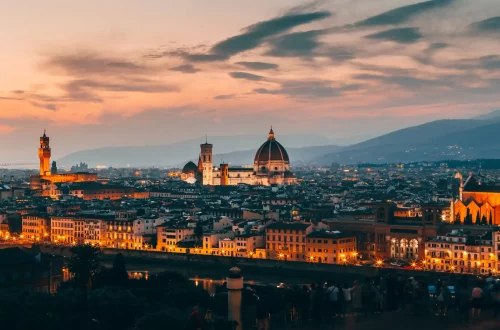The Catholic Church has been a fundamental pillar in Italy’s history, influencing its political structure, territorial organization, cultural development, and national identity. From Late Antiquity to the Middle Ages, through the Italian Unification (Risorgimento) and modern constitutional debates, the Church played a central role in shaping Italy’s social and political landscape.
Its historical presence as both a spiritual and governing institution has left a lasting legacy on the country’s traditions, governance, and even daily life. This article explores the Church’s historical significance, its territorial and political influence, its cultural contributions, its role during Italy’s unification, its presence in modern Italy, and the controversies surrounding its dominance.
History of the Catholic Church: the foundations of religious power
During the Late Antiquity, Christianity rose to prominence in the Roman Empire with two significant events:
- The Edict of Milan: issued in 313 AD by Emperors Constantine I and Licinius, marked a turning point in religious freedom within the Roman Empire. It granted individuals the right to worship any deity, officially recognizing Christianity’s legitimacy and restoring confiscated Christian property. Unlike previous edicts, which were short-lived, this proclamation permanently established religious toleration, ensuring Christianity could organize churches and operate freely.
- The Edict of Thessalonica: issued on February 27, 380 AD, by Theodosius I, Gratian, and Valentinian II, marked a major shift in the Roman Empire’s religious policies. It declared Nicene Christianity as the official state religion, ensuring its dominance in the Great Church, while condemning other Christian beliefs such as Arianism, labeling them heretical and subject to persecution. Theodosius’s decision was influenced by his baptism during an illness.
Following the collapse of the Western Roman Empire, the Catholic Church played a crucial role in preserving classical civilization, founding monasteries, and spreading Christianity across northern Europe, including Ireland, through missionary efforts. Meanwhile, in the Eastern Roman (Byzantine) Empire, Orthodox Christianity endured despite the Islamic conquests of the mid-7th century.
During the Middle Ages, the Catholic faith competed with Arianism for influence among barbarian tribes. A key turning point came in 496 AD, when Clovis I, the pagan king of the Franks, converted to Catholicism, marking the beginning of its rise in Western Europe as the dominant religious force.
The Catholic Church influence intensified especially within the Papal States, which ruled large portions of central Italy for over a millennium.
Political and territorial influence: Italy and the Catholic Church
The Papal States, which existed from 756 to 1870, played a crucial role in Italy’s fragmented political landscape, often clashing with neighboring city-states and foreign powers. Early on, the popes consolidated territory, gaining influence as Rome sought protection from external threats, such as the Lombards.
By the Late Middle Ages, the Church faced challenges from communal governments in central Italy, particularly in Romagna, and struggled against imperial interference from the Holy Roman Emperors. The rise of Florence, Milan, and Venice created tensions, with alliances and rivalries shaping territorial disputes.
During the Renaissance and early modern period, the papacy expanded its territories, often at odds with powerful ruling families like the Medicis in Florence and the Viscontis in Milan. By the 19th century, however, the Papal States became an obstacle to Italian unification (Risorgimento), as their division of the Italian Peninsula prevented national unity.
Foreign powers, such as France and Austria, intervened to protect papal sovereignty, delaying Italy’s consolidation. Ultimately, after Rome’s capture in 1870, the Papal States were dissolved, and Italy was unified—though the Church resisted this loss of temporal power until the Lateran Treaty of 1929, which established Vatican City as an independent state. Here are some important events:
- Historic rivalries: The Guelfs and Ghibellines, representing papal and imperial interests, fought for dominance in Italy and Germany, especially in Florence. Their rivalry intensified under Frederick I Barbarossa but declined by the late 14th century as imperial control weakened. In the 19th century, the conflict briefly resurfaced, with Neo-Guelfs supporting papal-led Italian unity and Neo-Ghibellines resisting Vatican influence.
- Alliances with city-states: The Vatican had a complex relationship with republics like Venice and Florence, offering patronage to artists while negotiating political influence.
- The Renaissance and Papal patronage: The Catholic Church commissioned masterpieces such as Michelangelo’s frescoes in the Sistine Chapel, reinforcing its symbolic power.
Cultural and social influence
Beyond politics, the Church shaped Italy’s education, art, and language:
Founding universities
The Catholic Church played a key role in legitimizing higher education, acting as an early accreditor for institutions like Bologna, Paris, Oxford, and Cambridge, with papal charters ensuring their recognition across Christendom.
Popes supported universities by granting legal protections and intervening in disputes, such as Pope Honorius III siding with Bologna’s scholars, Innocent III opposing the chancellor’s overreach in Paris, and Gregory IX’s 1231 papal bull Parens Scientiarum, which safeguarded academic independence from external influence.
This legacy established the Church’s deep influence in shaping educational institutions and their pursuit of knowledge.
Preservation of knowledge
Following the fall of the Roman Empire, monasteries and nunneries played a vital role in preserving classical knowledge, safeguarding the works of Aristotle, Plato, and Christian teachings. Over time, they became centers of intellectual inquiry, fostering critical thinkers like Peter Abelard and Hildegard von Bingen.
Influence on language and literature
Dante’s Divine Comedy played a crucial role in the development of the Italian vernacular language, breaking away from Latin, which had been the dominant literary language. His earlier work, De Vulgari Eloquentia (1302–1305), defended the vernacular, and by completing Divine Comedy in 1318 in his native Tuscan dialect, he set the foundation for a standardized Italian language.
After his death in 1321, the work gained popularity among both elite and common readers, as Latin was largely inaccessible to many. By the 15th century, printed editions spread widely, making Tuscan dialect more common across Italy. As humanists refined language during the Renaissance, Tuscan became the dominant written and printed language, eventually evolving into modern Italian.
Architectural influences
Architecturally, monuments like St. Peter’s Basilica and the Florence Cathedral showcase the Church’s enduring legacy, while Catholic values continue to shape Italy’s cultural fabric.
The church and the unification of Italy (Risorgimento)
In 1870, the Kingdom of Italy annexed the Papal States, stripping the Catholic Church of its territorial control. After Italian troops seized Rome, Pope Pius IX refused to recognize the new state and declared himself a “prisoner of the Vatican”.Rejecting Italy’s authority, he withdrew into the Vatican and refused to engage politically.
To reinforce this stance, the Church instituted the non expedit policy (1868–1919), prohibiting Italian Catholics from participating in national elections as a form of protest against the loss of papal lands.
The non expedit policy led to significant political absenteeism. However, Pope Pius X softened the restrictions in 1904–05, and in 1919, Pope Benedict XV officially abolished the policy, endorsing the Italian Popular Party (PPI). The Roman Question, or the struggle between the Vatican and Italy, persisted until the Lateran Treaty of 1929, which formally established Vatican City as a sovereign state under the government of Pope Pius XI.
The catholic church’s legacy in modern Italy
Even after losing its political power, the Catholic Church remains deeply embedded in Italy’s laws, education system, and social debates:
- The 1984 revised concordat allowed the Catholic Church to appoint state-funded religion teachers in public schools: These optional courses, once taught only by priests, could now include lay instructors and cover material on non-Catholic faiths. While private schools receive no state funding, parents get tax benefits for private education.
- Influence on social issues: The Church actively shapes discussions on abortion and same-sex marriage, advocating traditional values.
- Tourism and cultural heritage: The Vatican and Assisi, both UNESCO landmarks, attract millions of tourists and pilgrims, boosting Italy’s economy. The Vatican, a hub of art, history, and spirituality, features St. Peter’s Basilica and the Sistine Chapel, while Assisi’s Basilica of San Francesco draws visitors for its religious and cultural significance, supporting local businesses.
Controversies and criticism
Despite its significant contributions to education, culture, and governance, the Catholic Church has faced criticism for its authoritarian practices and cultural dominance throughout history. One of the most notable examples of historical repression is the Inquisition, a Church-led effort to enforce religious orthodoxy and eliminate heresy.
Beginning in the 12th century and extending into early modern Europe, the Inquisition persecuted individuals who were seen as threats to Church doctrine, including scientists, reformers, and alleged heretics. Similarly, the Index of Forbidden Books, which listed works considered dangerous to Catholic teachings, further restricted intellectual freedom, preventing access to many philosophical, scientific, and literary texts that challenged Church authority.
The Church’s cultural dominance also led to the marginalization of alternative beliefs, particularly pagan traditions in Northern Italy. As Christianity spread, ancient folk practices and regional spiritual customs were often suppressed or absorbed into Catholic rituals, leading to the loss of pre-Christian traditions.
Many local deities, festivals, and spiritual customs were either rebranded to fit Christian narratives or outright rejected as incompatible with Church doctrine. While Catholicism helped unify Italy under a shared religious identity, critics argue that this process erased regional diversity, forcing populations to abandon their historical roots in favor of an imposed belief system.
In modern times, critics argue that the Church maintains undue influence on Italian politics, despite Italy being a secular state.
The Catholic Church has shaped Italy’s history, governance, and cultural identity for centuries, leaving a lasting imprint on art, education, and political thought. Its territorial rule, engagement in Italian unification, and continued presence in modern institutions highlight its complex relationship with Italy. While some argue for further separation of Church and State, it remains an integral force in Italian society, balancing tradition with contemporary debates.
